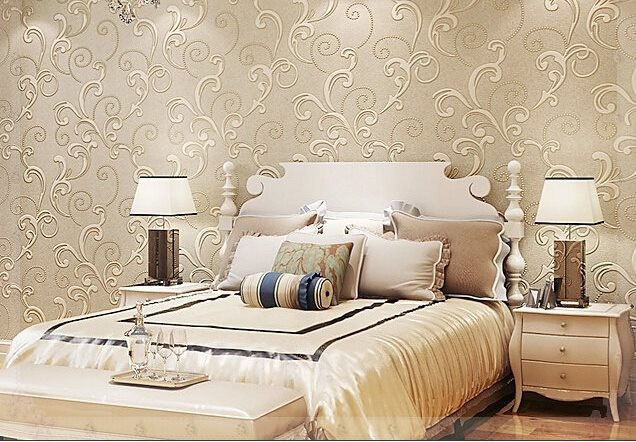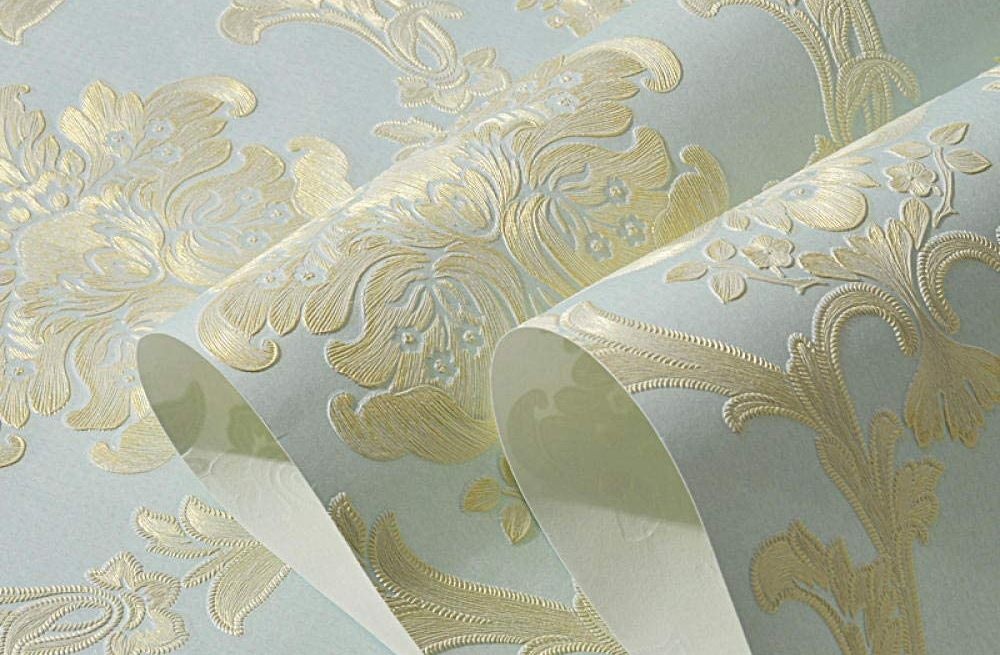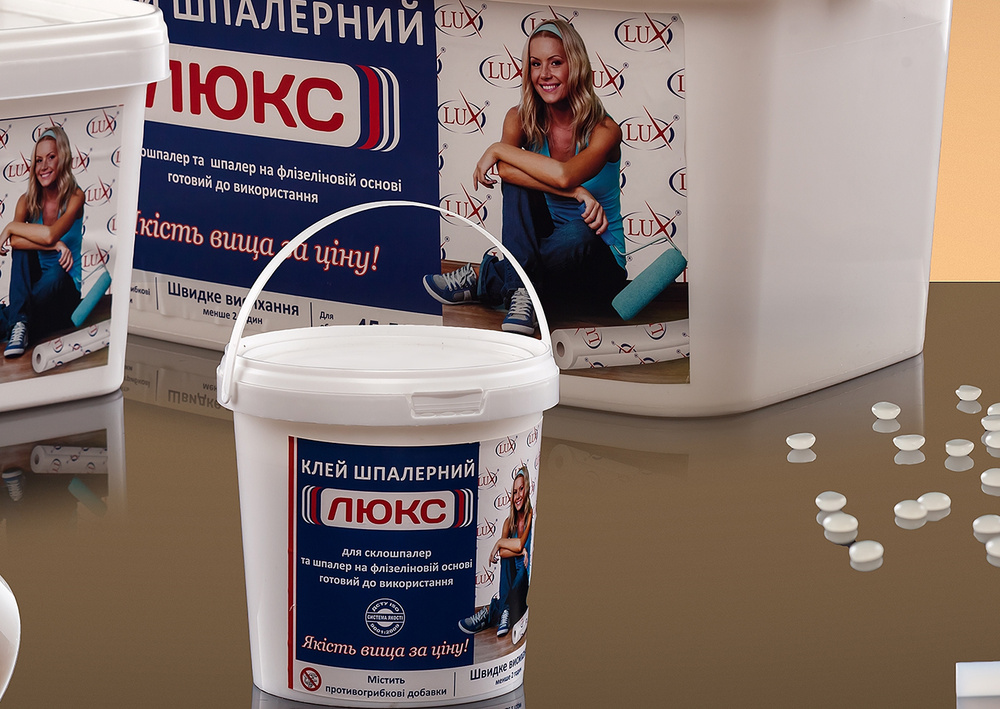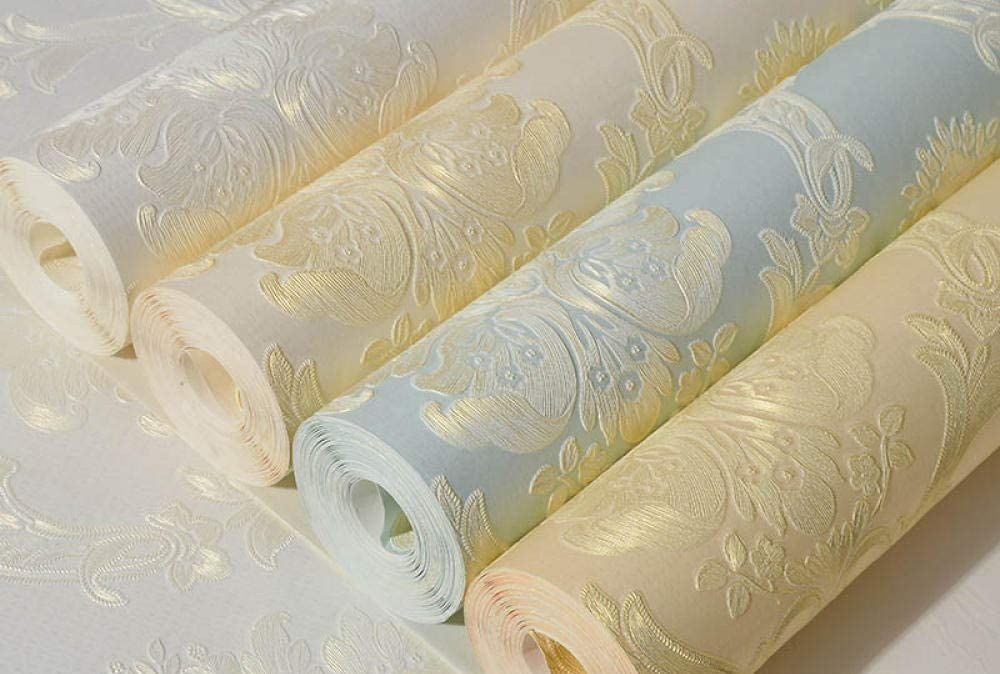How to hang textile wallpaper. Problems and their solution
- What adhesive to choose for textile wallpaper?
- Lux adhesive properties
- Lux adhesive advantages
- How to hang textile wallpaper properly
- Where to buy Lux wallpaper adhesive
Textiles, as a finishing material, have been used for long. The process of decorating walls and ceilings with textiles was very time-consuming. Specialists covered surfaces with a fabric or stretched the material on wooden frames, followed by attaching them to walls. The wooden base with fabric was called a tapestry, and latter this term started to be used for wallpaper. Decorating with fabric became popular in the ages of classicism and baroque. At that time, only the houses of the wealthy were decorated with textiles. After a while, textile was replaced with textile wallpaper. Nowadays it is freely available for lovers of luxurious interior design.

The backing for textile wallpaper is paper, non-woven fabric or vinyl. Using a special adhesive and multicolour fibres, a pattern is applied onto the backing, making the covering unique. After this, a fabric is glued on top.
Depending on the backing, textile wallpaper is of the following types: silk, linen, velour, cotton, and felt. Apart from its aesthetic properties, a textile covering has other advantageous characteristics:
- A natural material, due to which the amount of accumulated dust is minimised;
- Inconspicuous butt joints on the surface;
- Additional noise and heat insulation for walls.
When hanging textile wallpaper take care to keep the adhesive off the sheet. During usage, make it a rule to clean the textile wallpaper regularly.
What adhesive to choose for textile wallpaper?
When choosing an adhesive be just as responsible as you would when purchasing the wallpaper. Quality adhesive ensures a steadfast bond and safe working conditions. When choosing an adhesive, we recommend considering the following factors:
- The sheet material, weight and shifting on the surface.
- Room humidity and temperature.
- Adhesive specifications: water resistance, pH level and adhesive consumption. A low acidity level causes yellow stains to appear; therefore, the pH level should be within 6-7.

Depending on the adhesive components and usage conditions, the following kinds of adhesives are distinguished: all-purpose and special.
The all-purpose adhesive differs in composition and it is used for working with different kinds of wallpaper. With this in view, an adhesive is best to be used with thin wallpaper because the heavier the sheet the more adhesive needs to be spread over the surface.
The special adhesive is the best option because its composition was developed specially for hanging glass fibre wallpaper and textile wallpaper. As a rule, this adhesive is sold in plastic containers in ready-to-use form.
It is best to buy wallpaper adhesive as ready-to-use. Such adhesive is more convenient to use. Preparing it needs no time expenditure and it has an excellent bonding capacity owing to the high concentration of a polymer in the composition.
Lux wallpaper adhesive is best for seamless textile wallpaper. The adhesive has high adhesive properties, allowing it to bond rapidly and hold the covering on the wall or ceiling in place during the entire usage period.
Lux adhesive properties
- White viscous liquid. After drying, the glue film is colourless.
- Non-toxic and fireproof.
- Maintains its physicochemical properties after five freezing cycles.
Lux adhesive advantages
- Environmentally friendly.
- Excellent moisture resistance.
- High adhesion properties.
- Effective antifungal protection.
The characteristics of Lux wallpaper adhesive make it an all-purpose product for all kinds of wallpaper and heavy wall coverings.

How to hang textile wallpaper properly
Prior to hanging wallpaper, prepare the surfaces: remove traces of old covering, plaster the cracks and smooth the walls. Prime the smoothed surface with a special agent or with the adhesive used for hanging wallpaper. For priming, dilute the adhesive with water in the ratio of one part of adhesive and two parts of water (add water to the adhesive in small measures while stirring). After the preparation stage has been completed let the walls dry completely.
Before hanging the wallpaper, to make things easier, specialists recommend using a plumb to draw vertical lines 1-1.5 meters apart. When hanging the wallpaper the temperature should be within +10 to +30 °С, with an optimal humidity of 70%.
An important aspect is the wallpaper hanging process. Hang textile wallpaper edge-to-edge so that no joints are evident. To know how the pattern will look on the wall, cut the roll preliminarily into equal lengths. Hold these lengths to the wall and imagine the order in which the covering will be applied and number the cut lengths.
Next, start to hang the wallpaper. Bear one point in mind: if the wallpaper has a non-woven backing, then it is best to apply the adhesive onto the wall, covering a surface that matches the wallpaper roll width. Use a roller with fine bristles to apply and spread the adhesive.

If the wallpaper has a paper or vinyl backing, prior to using the adhesive dilute it with 10% of water and stir. Apply the adhesive onto the covering rather than onto the wall, and then let the adhesive steep in well. This takes no more than 5 minutes. Do not keep the wallpaper wet for long because the material will swell.
It is best to hang the wallpaper by working from top to bottom, smoothing the sheet with a stiff rubber roller. If the surface is smoothed with a plastic spatula, excess adhesive will squeeze out and smudge the textile sheet. It is not good to smooth the wallpaper with hands or a cloth. Smooth the wallpaper following the hanging rule: working from top to bottom.
After the textile wallpaper has been hung, take care of it regularly. Clean textile wallpaper with a soft brush or wipe with a cloth moistened with a dust suppression composition. Vacuum clean the wallpaper twice a year as the need arises.
If a stain appears on the wall, it is easier to remove it when fresh. To do this, wet the stain with a slightly moist cloth (even a soap solution can be used) and then dry the wet spot with white paper or a hair dryer, though do not rub the surface while removing the stain.
Where to buy Lux wallpaper adhesive
You can order Lux wallpaper adhesive at an optimal price directly from the manufacturer. Wallpaper adhesive is sold wholesale and by retail. Lux adhesive is also sold in Kharkiv in DIY stores. Buying in commercial quantities offers flexible discounts with fast and free delivery in Ukraine. Call us at + 38(057)766-06-36 for more information on the product and to order the wallpaper adhesive. Our specialists will consult you in detail and answer all your questions.






